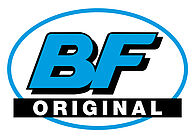Crankshaft

Combustion of the fuel-air mixture in the engine produces power. This power is transformed into rotary movement of the crankshaft.
Function
Combustion of the fuel-air mixture in the engine produces power. This power is transformed into rotary movement of the crankshaft. The linear motion of the pistons is converted by way of the connecting rod into a  torque and is then passed to the flywheel.
torque and is then passed to the flywheel.
The crankshaft has to withstand considerable loads in this process. On the one hand it is subjected to severe bending and torsional stress. Further loads arise from torsional vibration, as the rotary movement of the crankshaft is constantly being abruptly accelerated and decelerated. The bearings are also subject to a high degree of wear.
Crankshaft design and components
To be able to withstand wear and the strain of rotary movement, crankshafts need to have a hard surface and a tough core. For this reason crankshafts are often forged. Alloyed heat-treated steel or nitrided steel is used as raw material. The crankshaft journals are also surface-hardened.
A crankshaft comprises the following components:
- Main journals
- Crank pins
- Crank webs
- Counterweights
Main journals run in the main bearings and define the axis of rotation of the shaft. The connecting rods are connected to the crank pins. Crank webs connect the crank pins to the main journals. The counterweights provide balancing and are attached to the webs.
The design of the crankshaft is determined by the firing order of the engine, the number of cylinders, the design of the engine, the size of the stroke and the number of crankshaft bearings.
Height-adjustable crankshaft mounting – using an eccentrically mounted crankshaft bearing for example – makes it possible to achieve variable compression. The advantage of variable compression is that fuel consumption can be reduced by up to 25 per cent in the part load range.
Downloads
Here you can find all available downloads for the topic "Crankshaft":
All file downloads:





